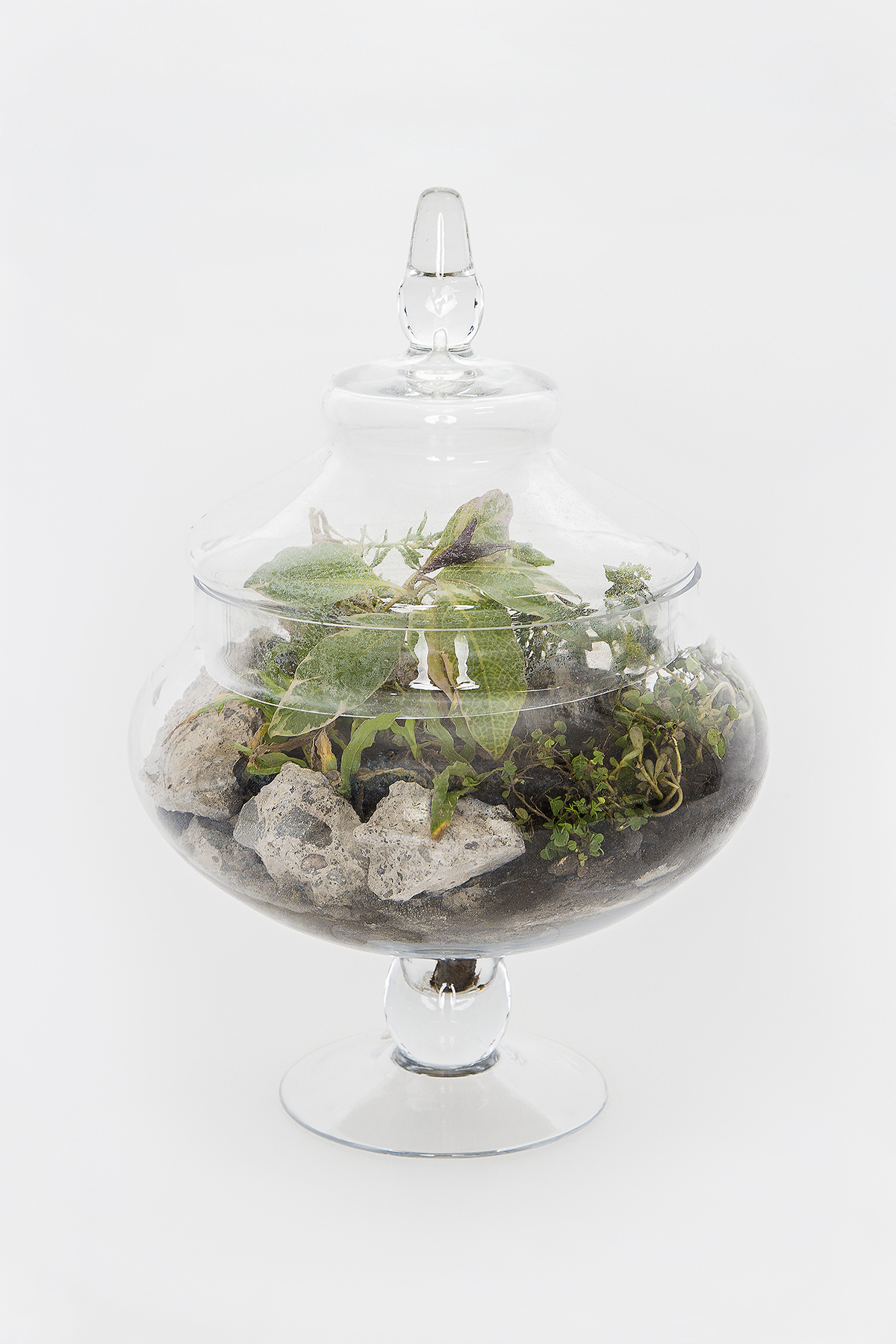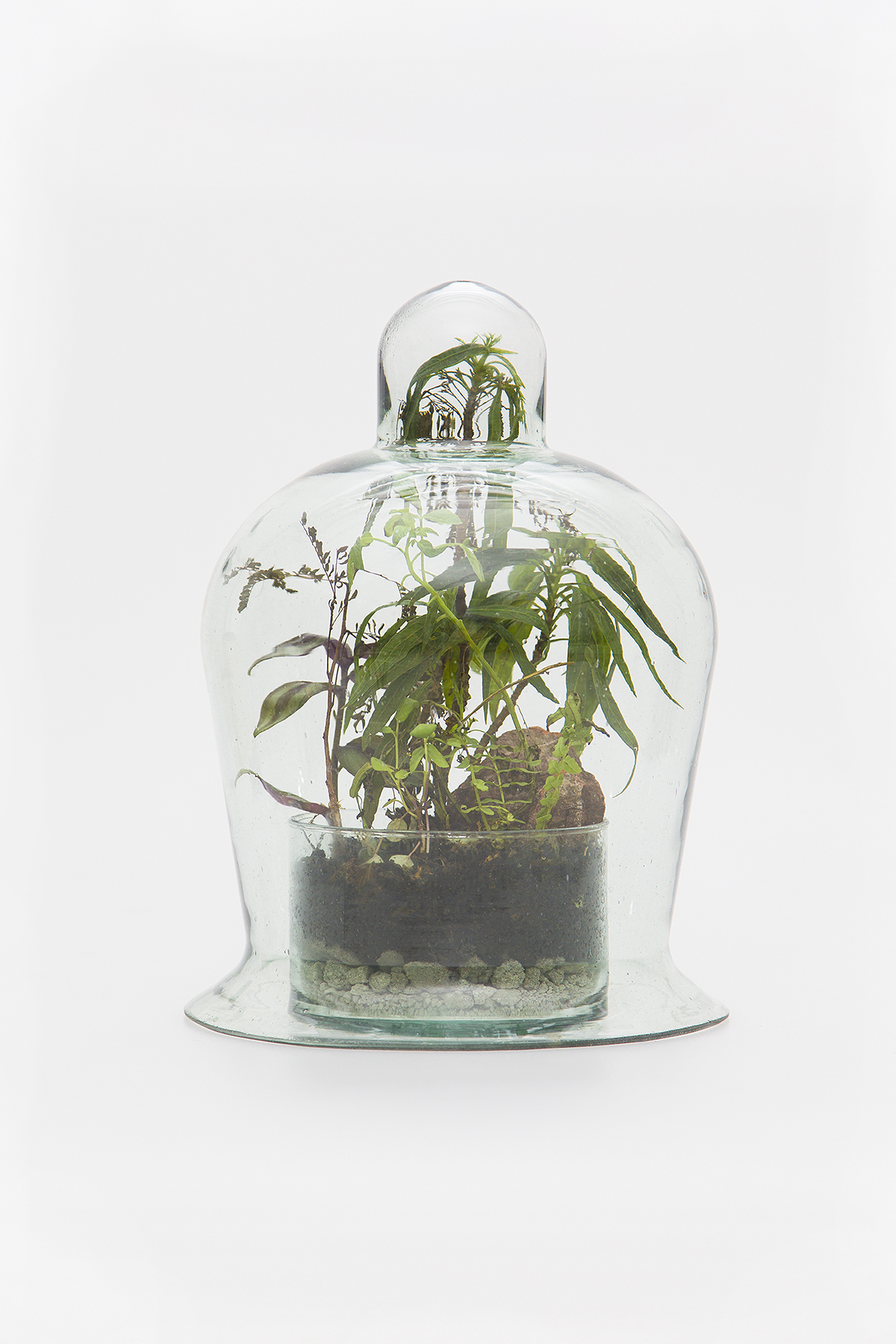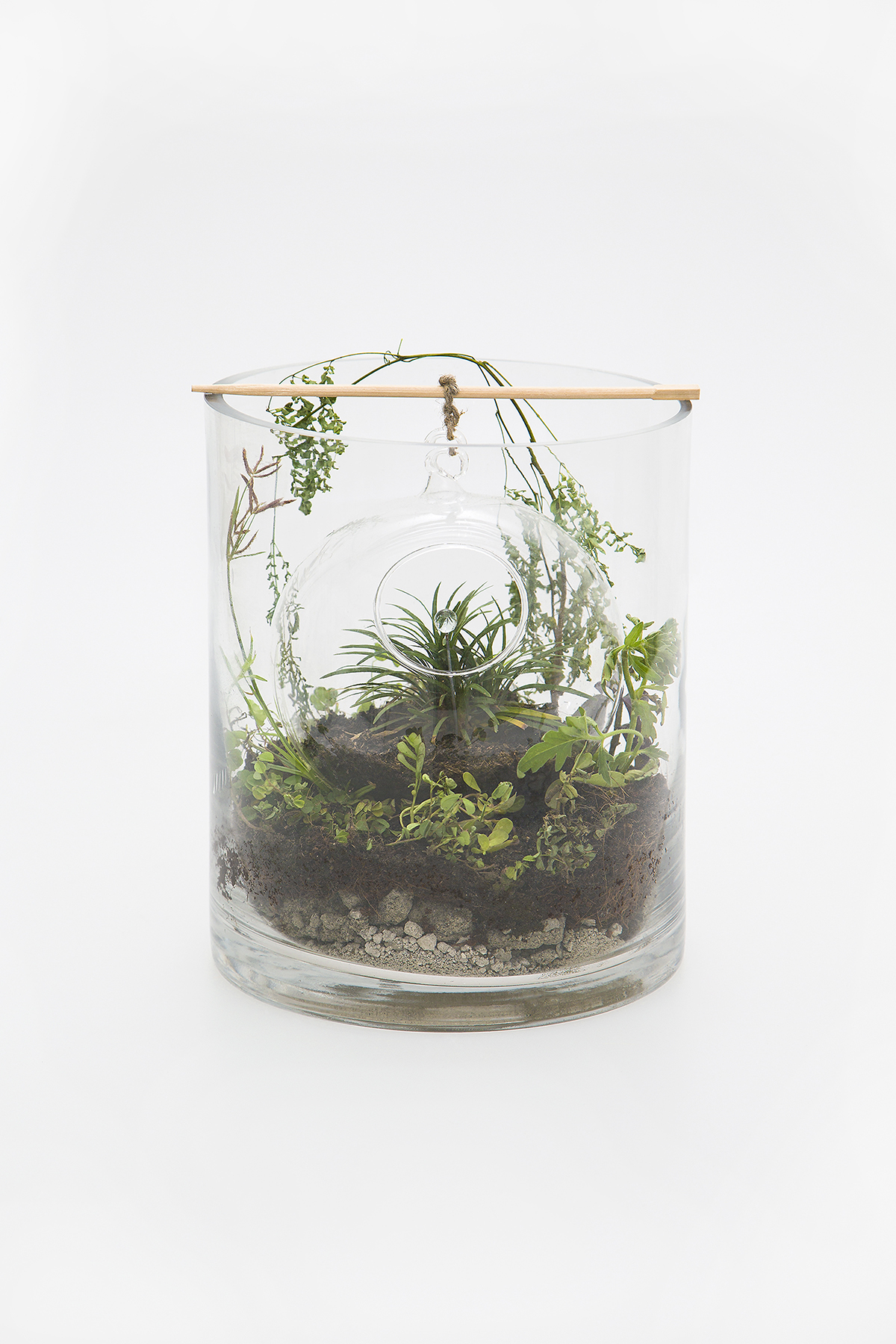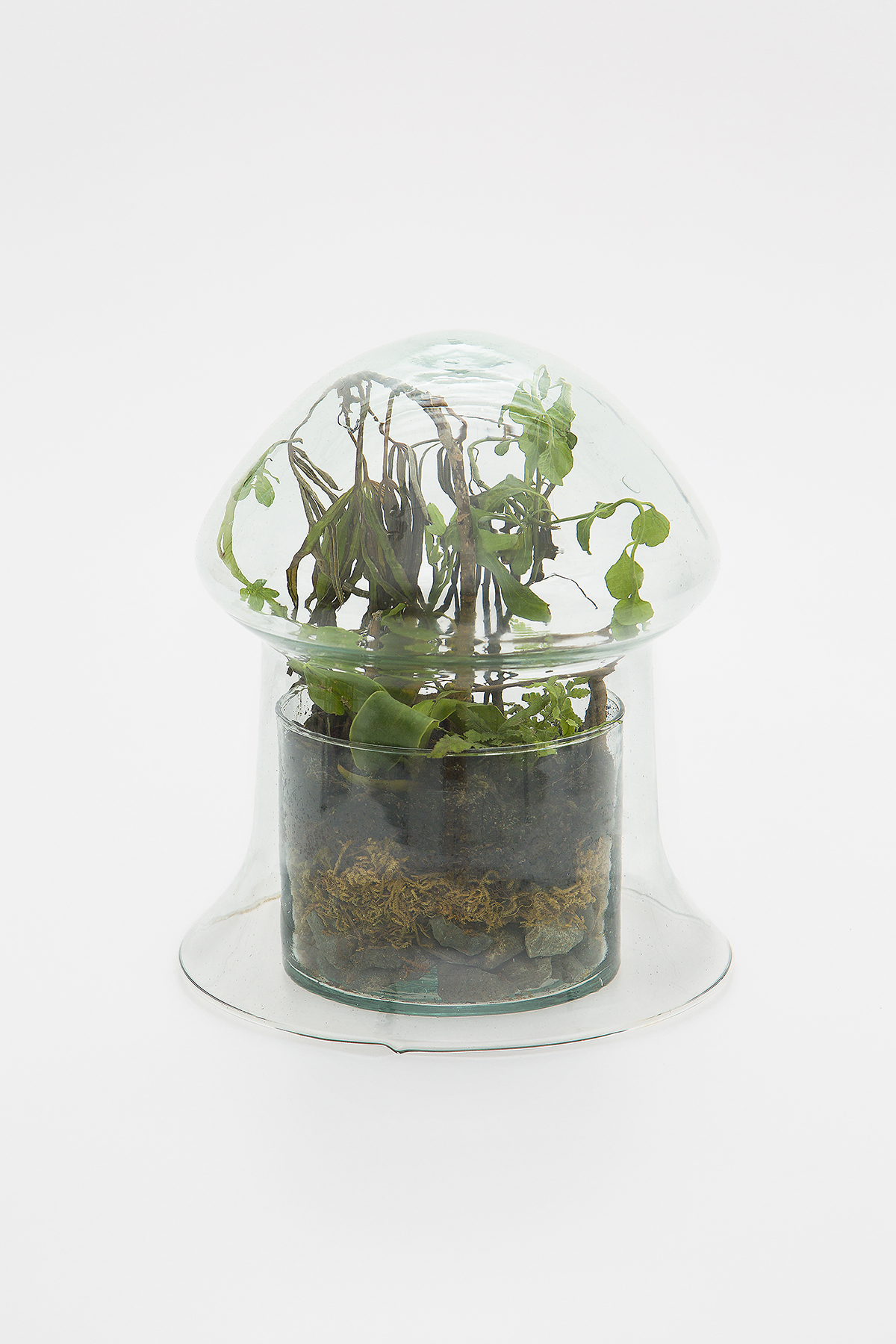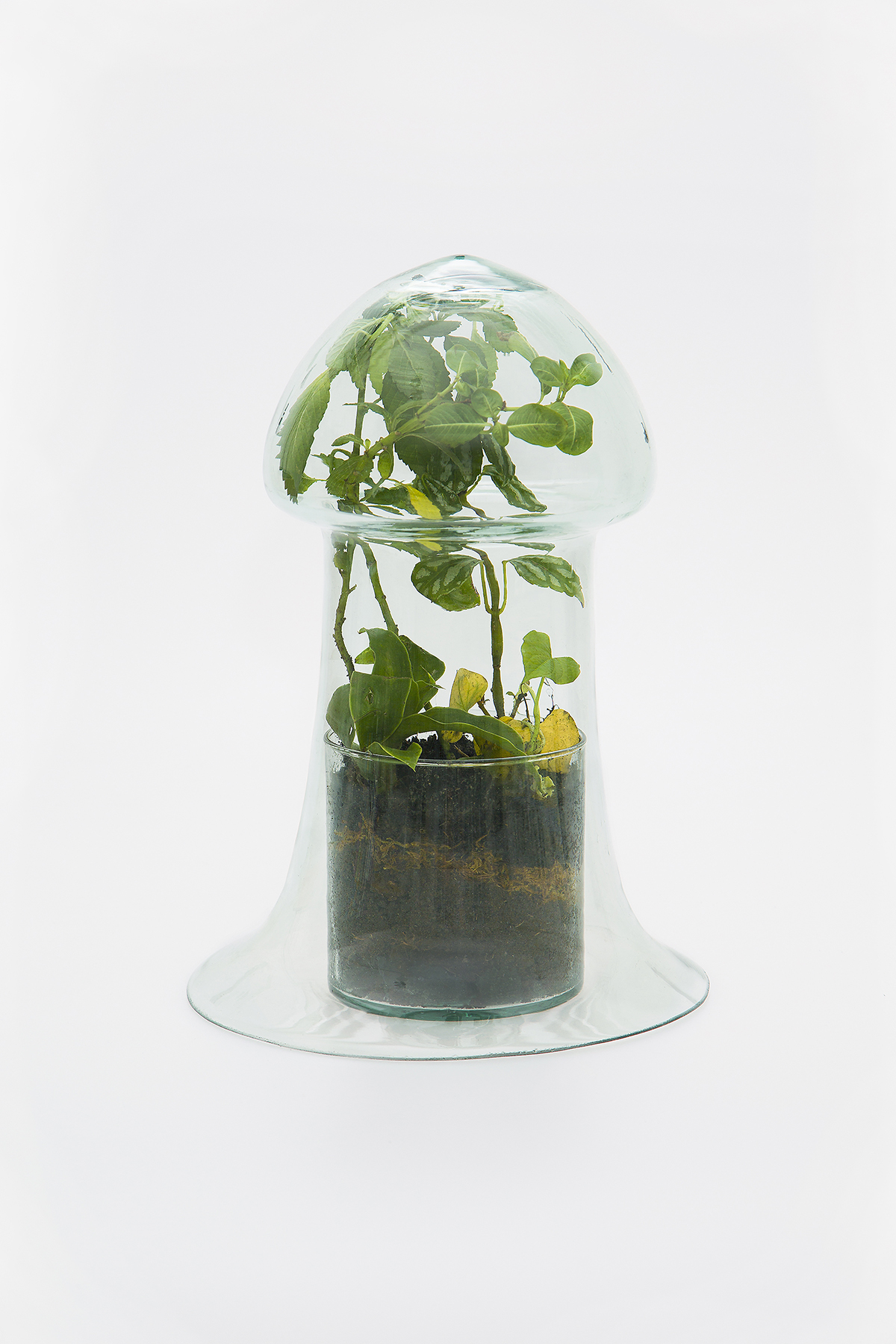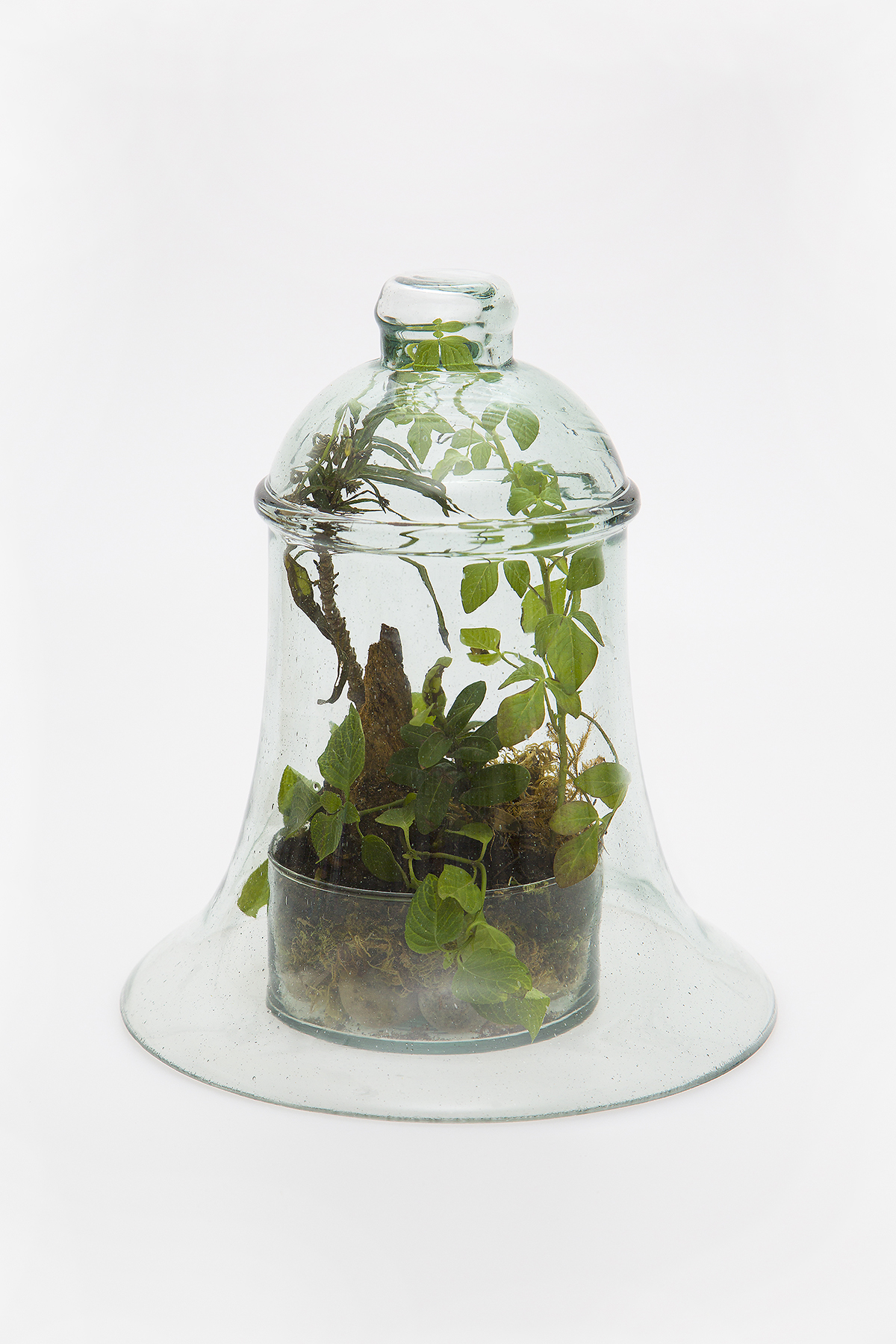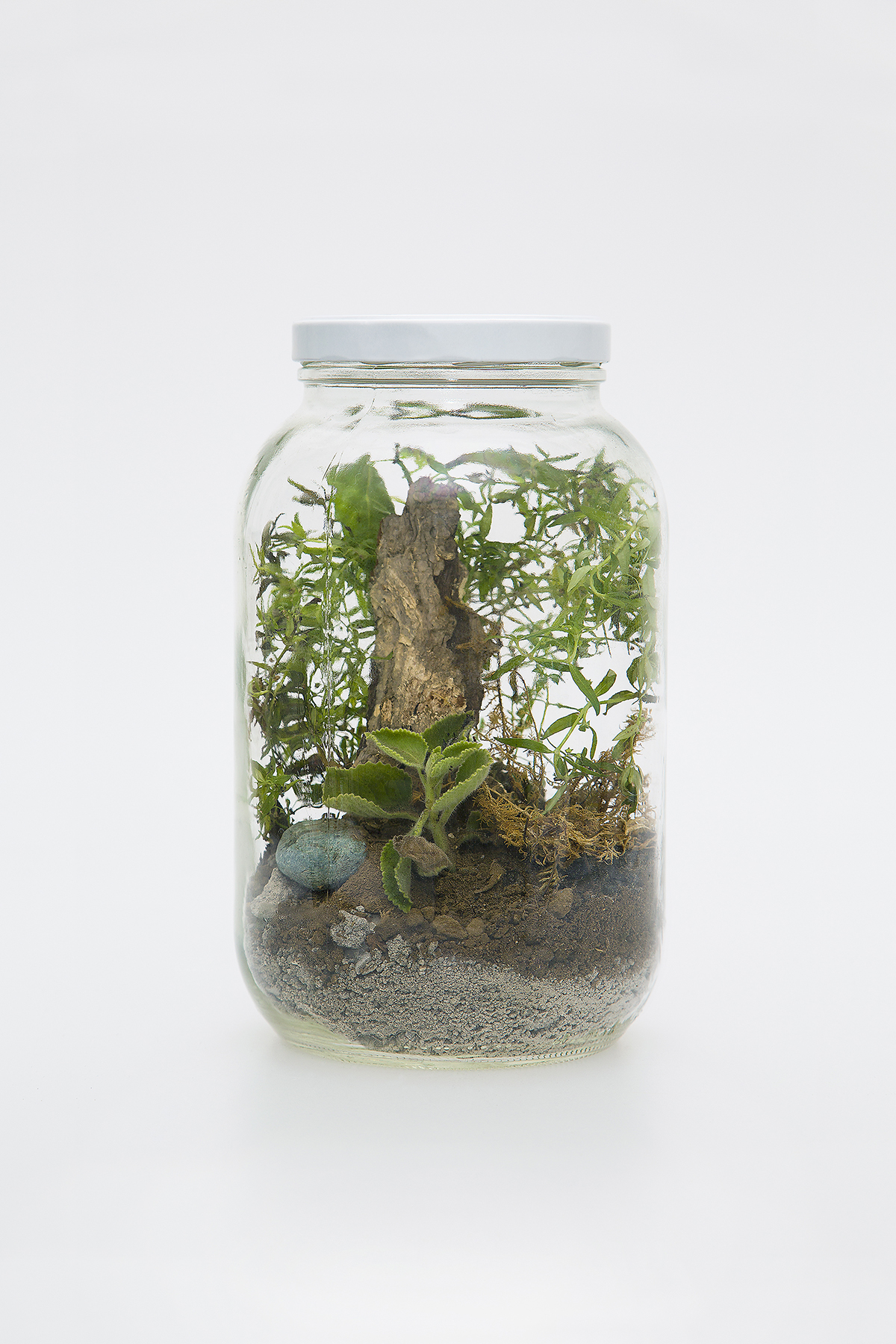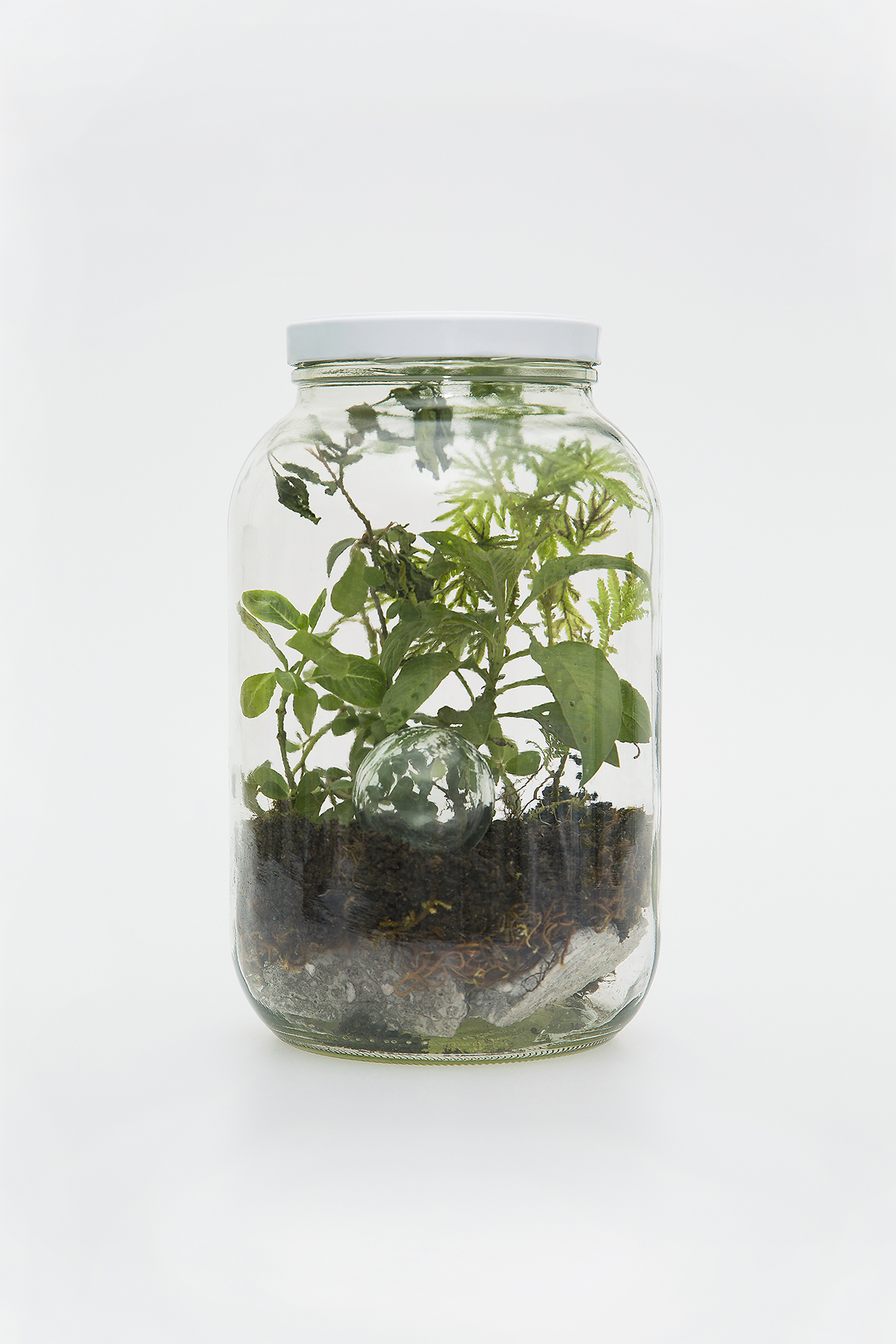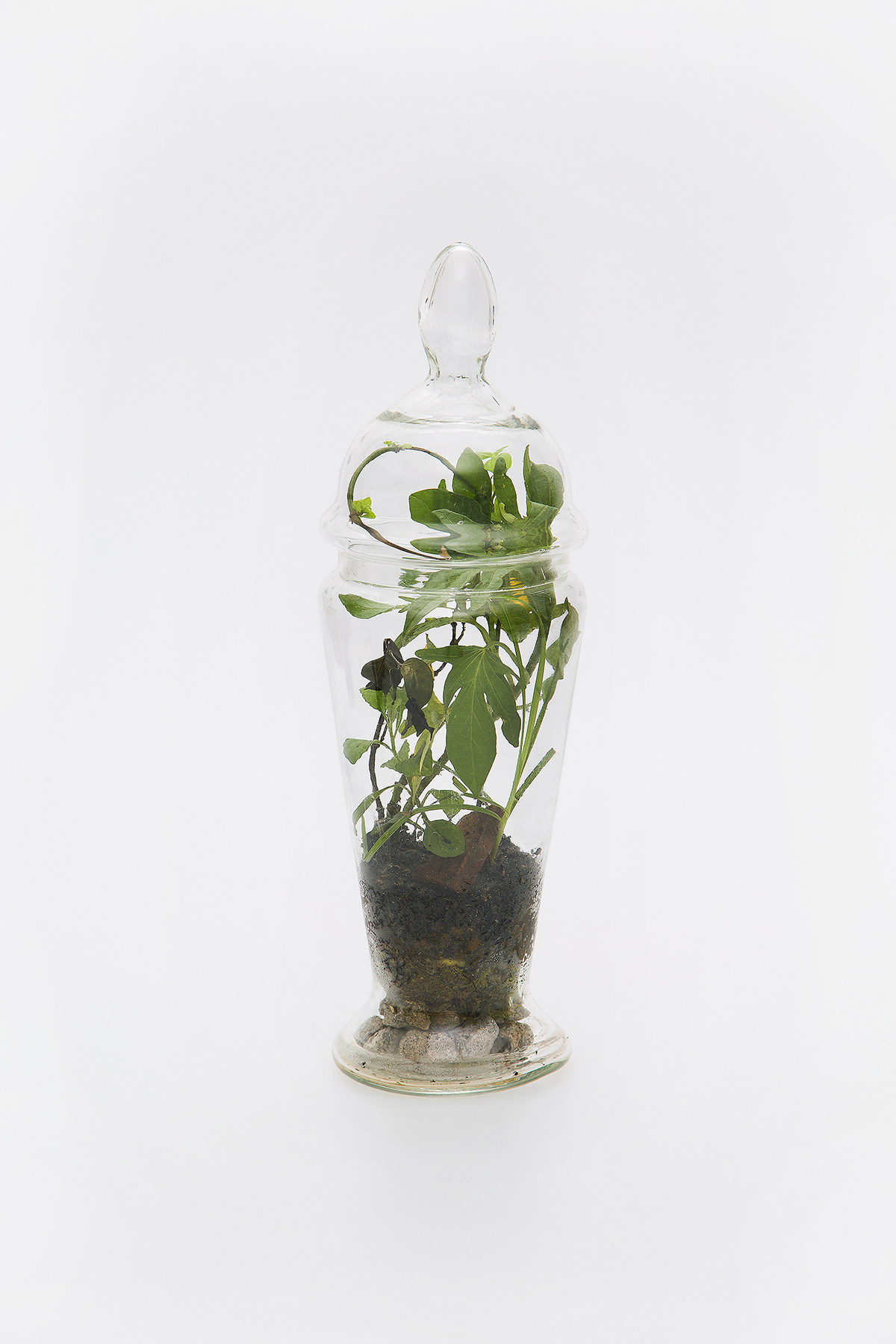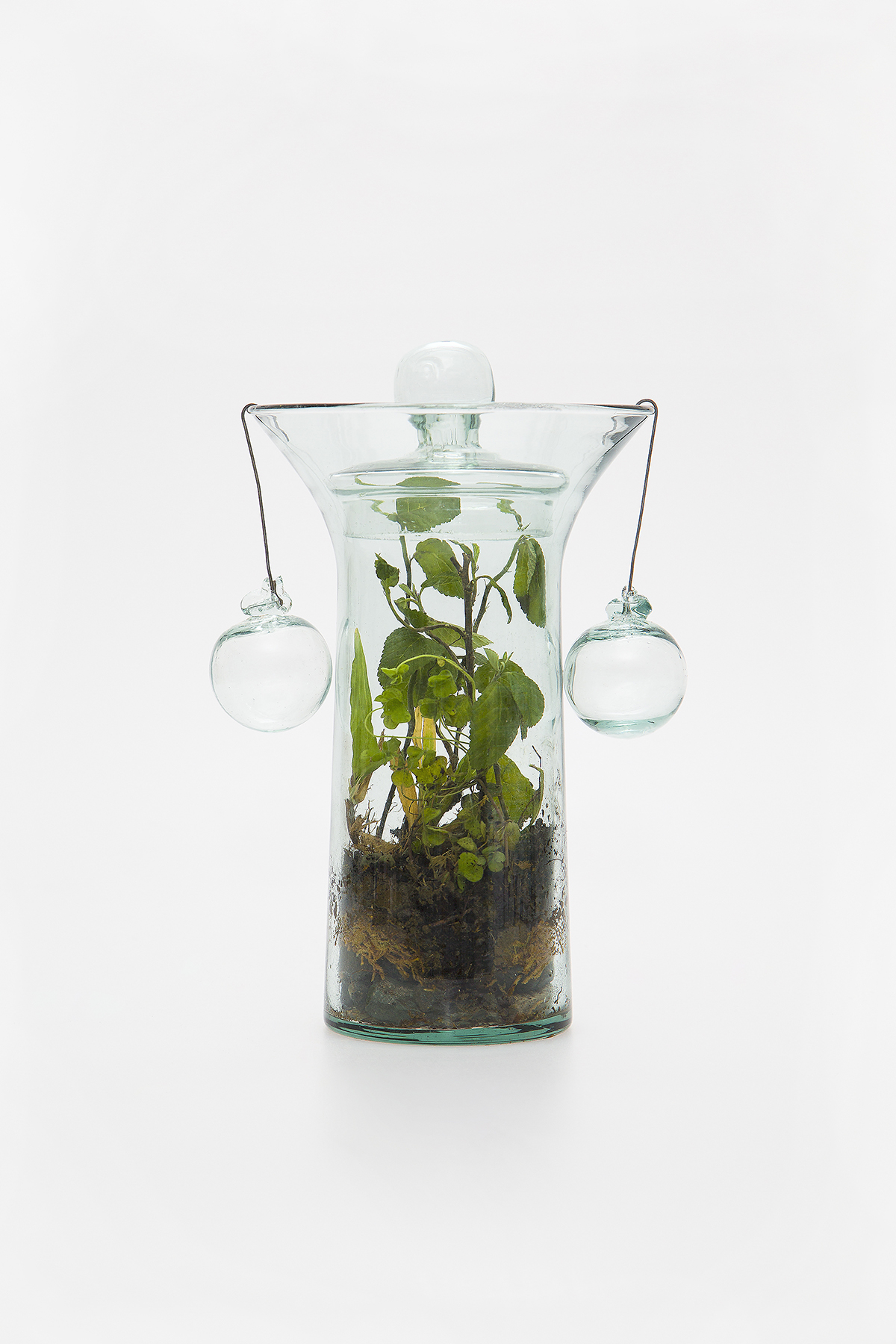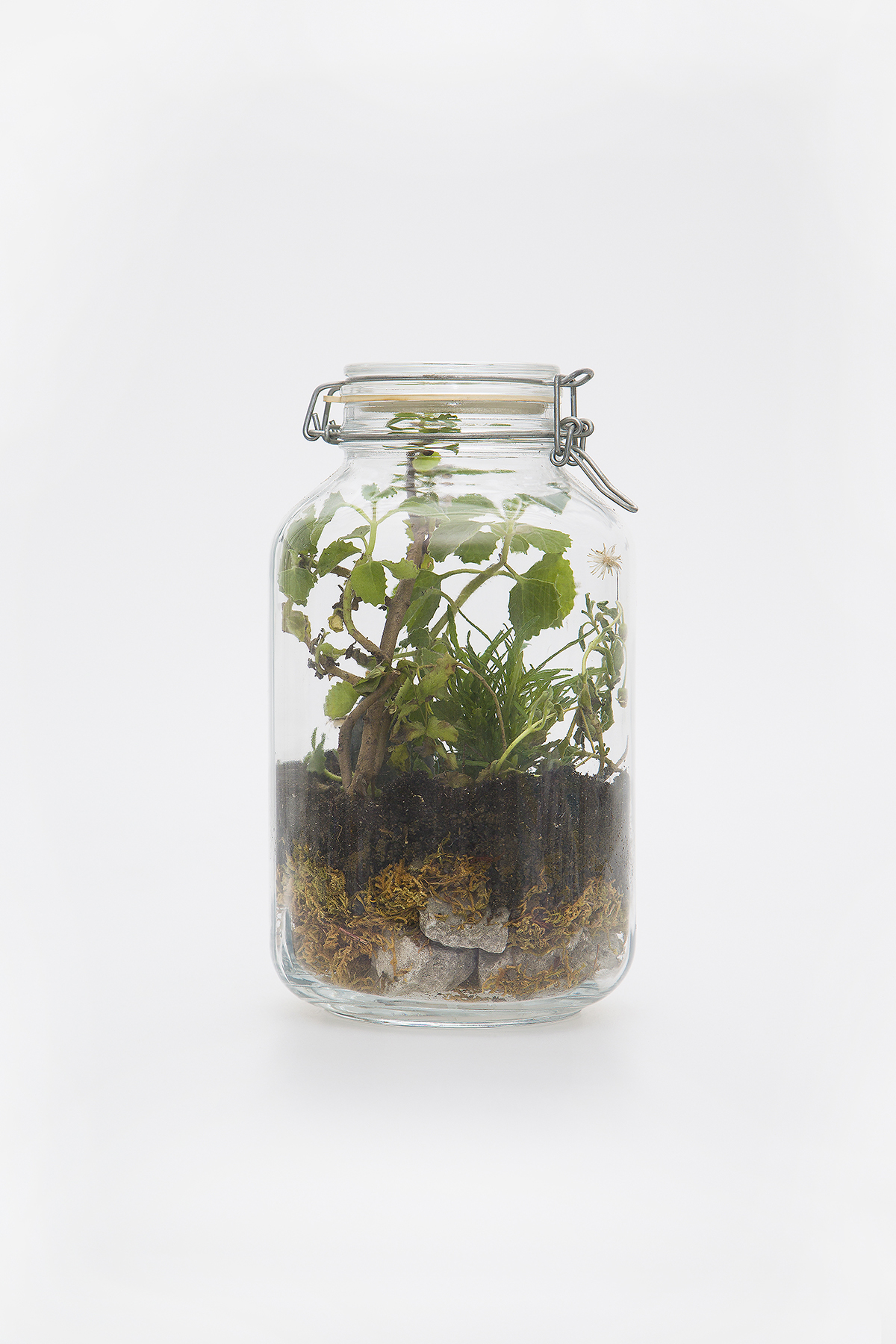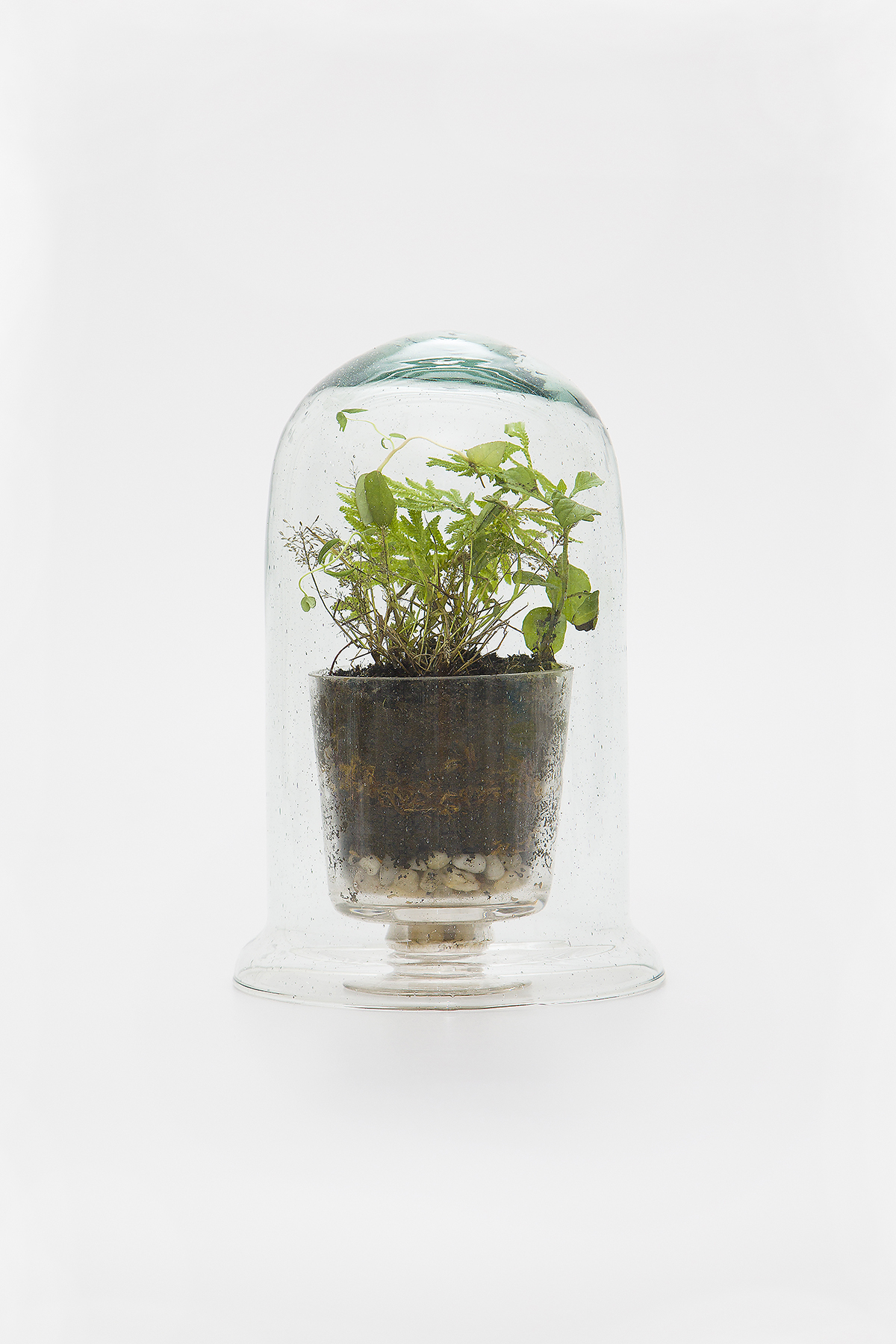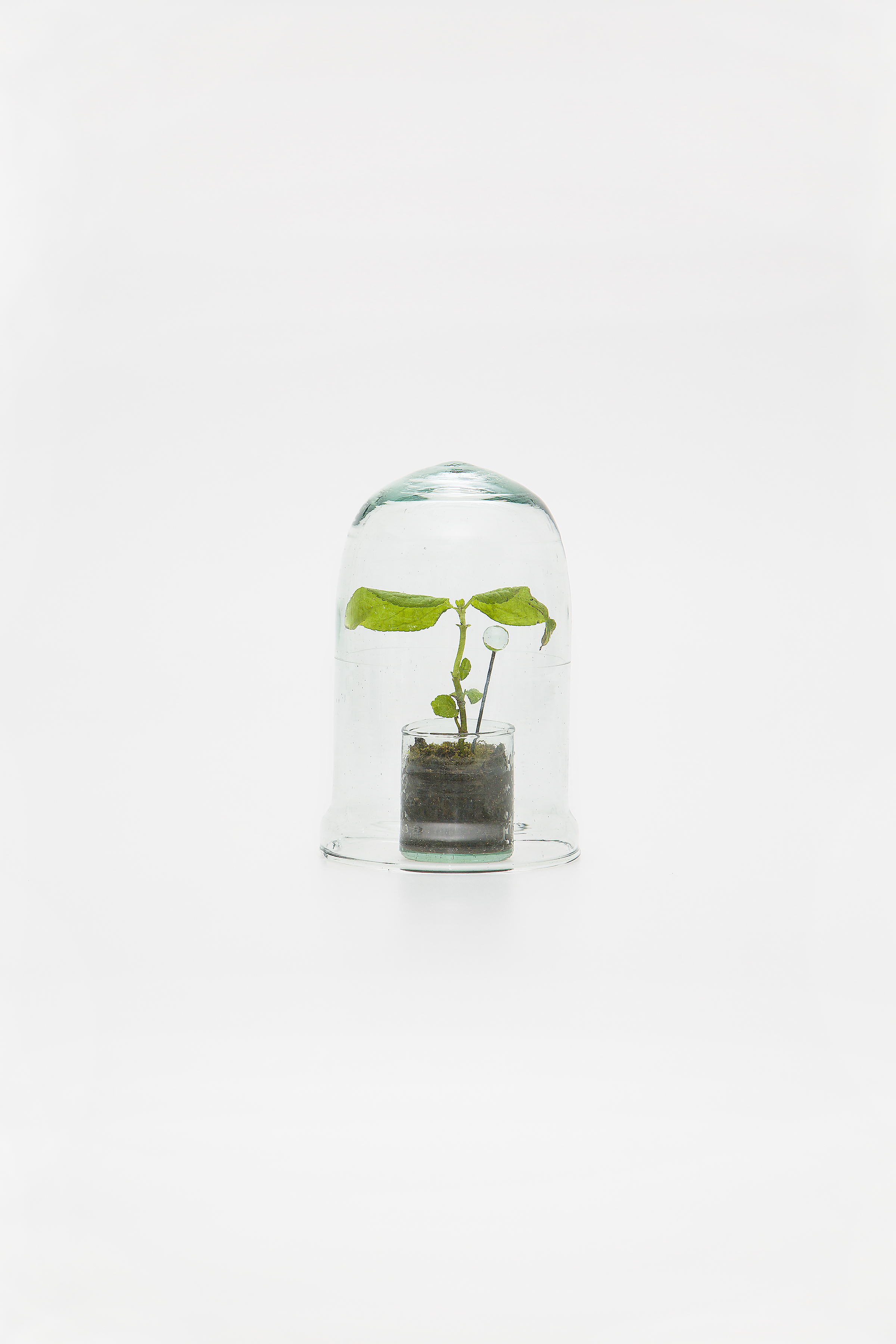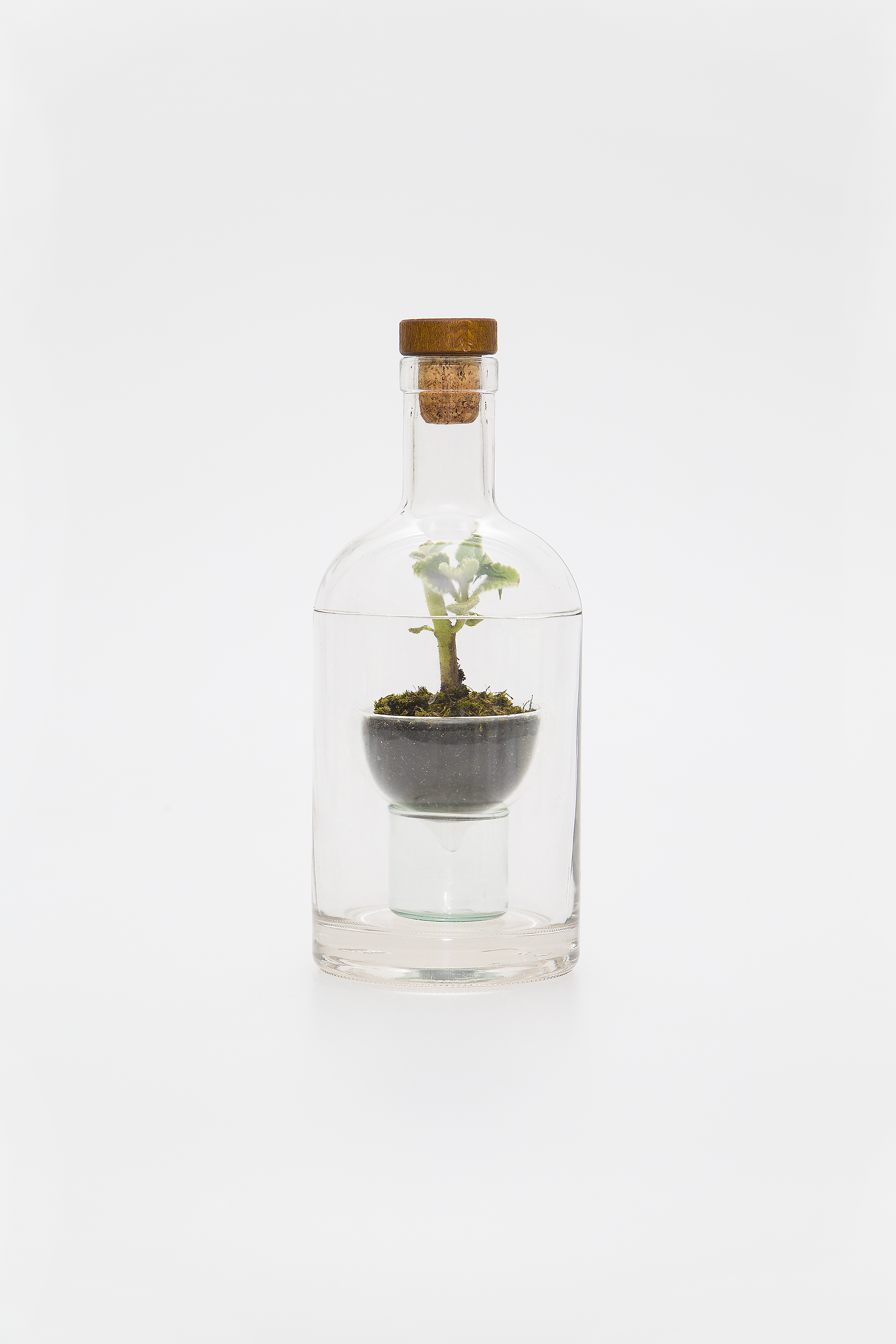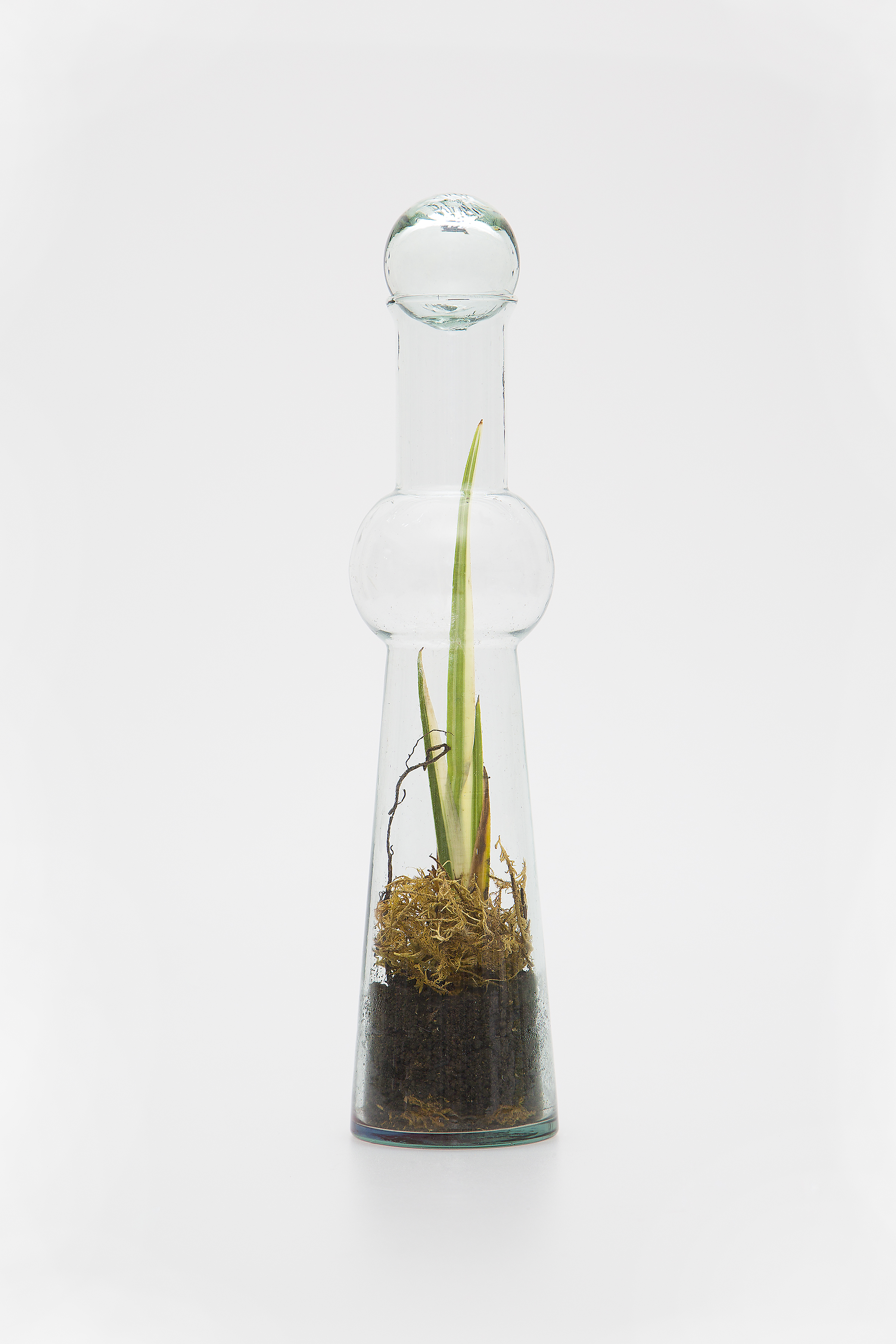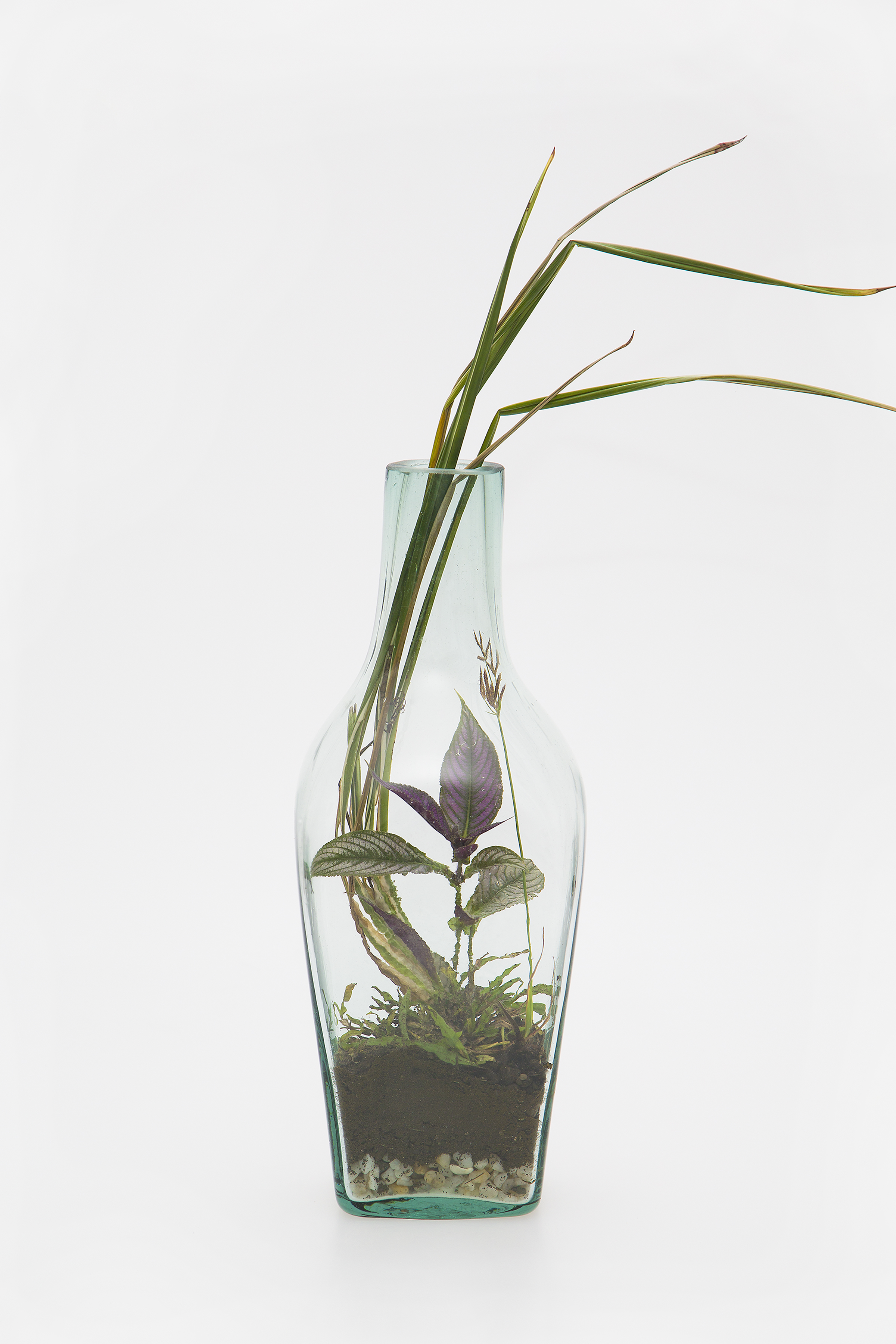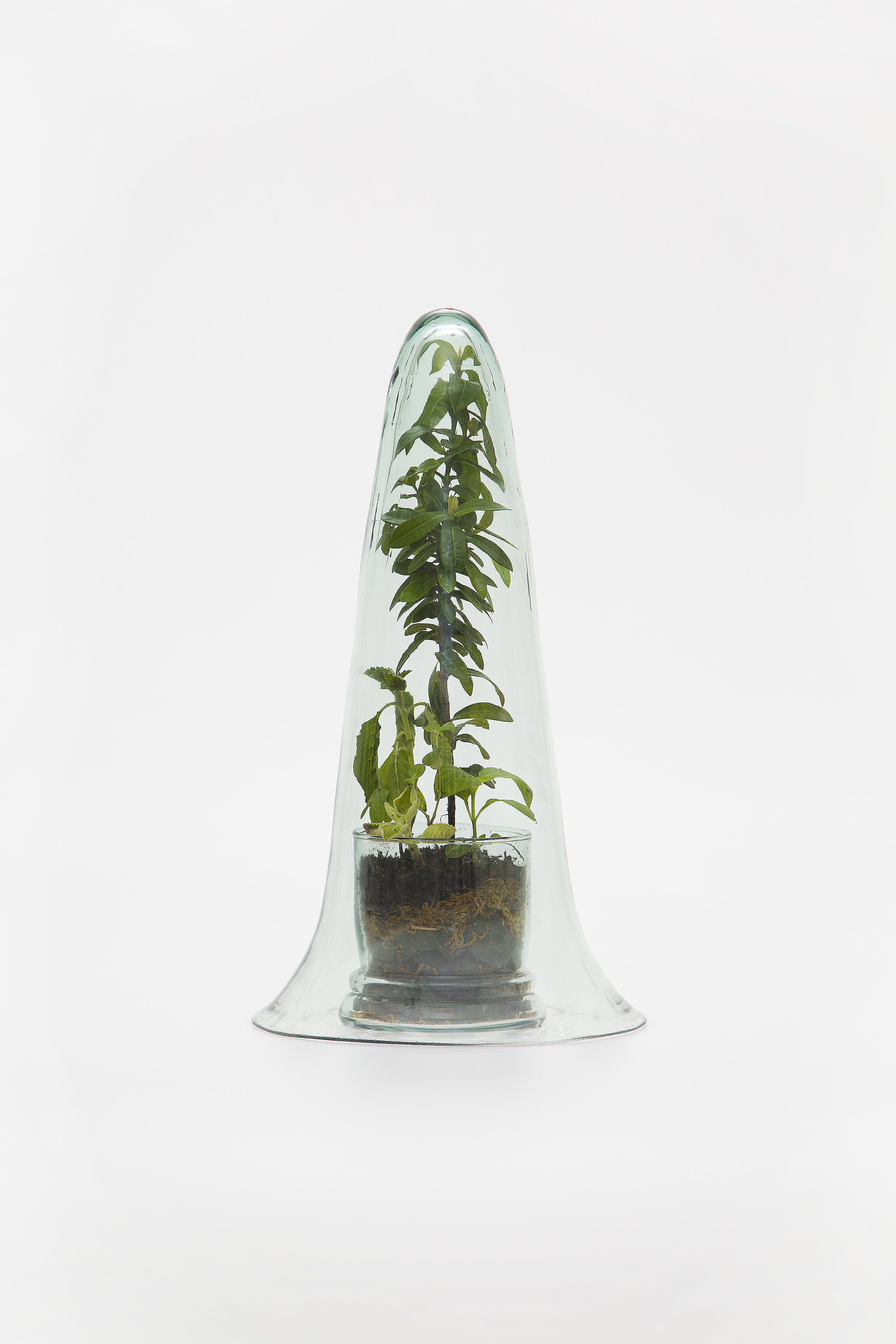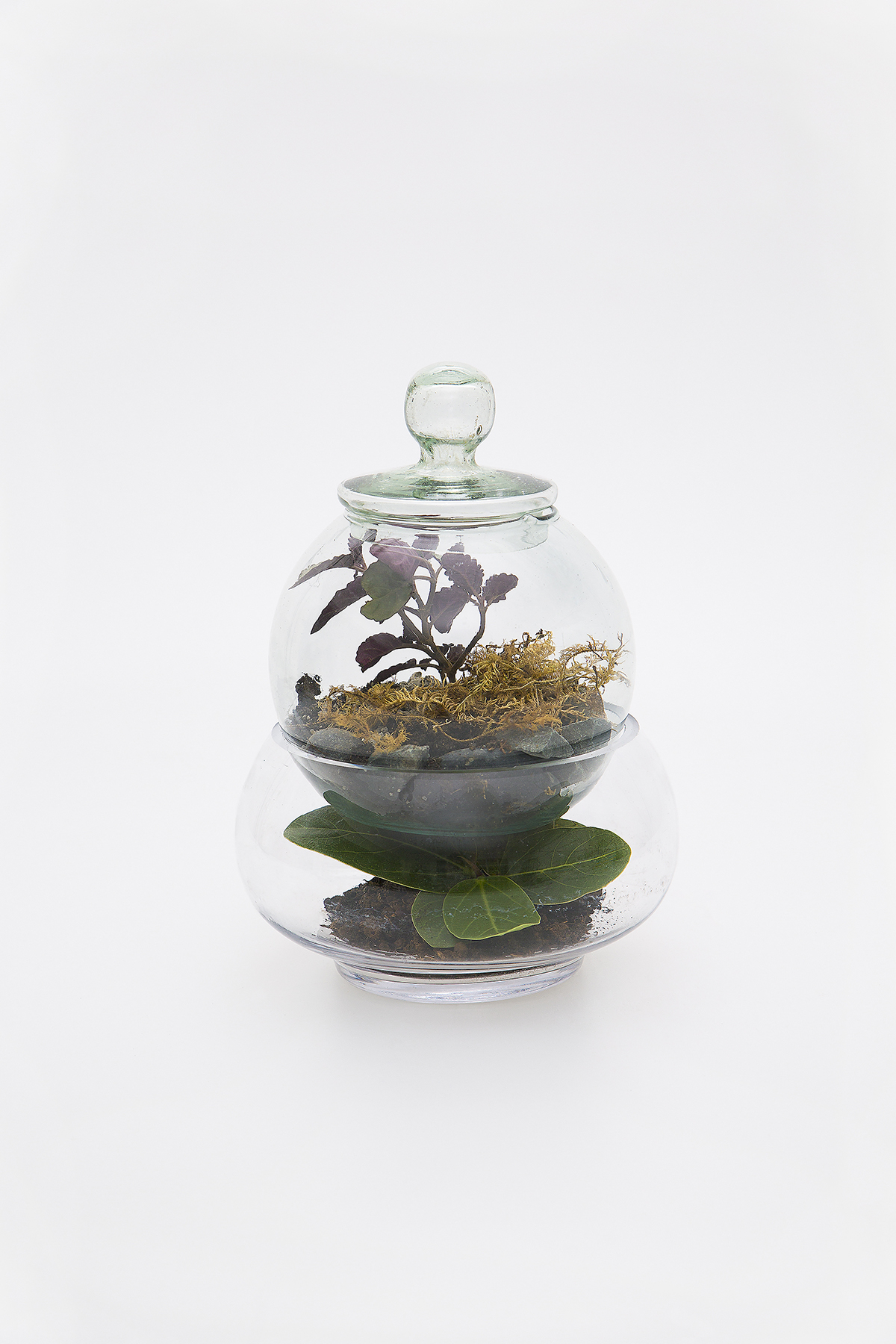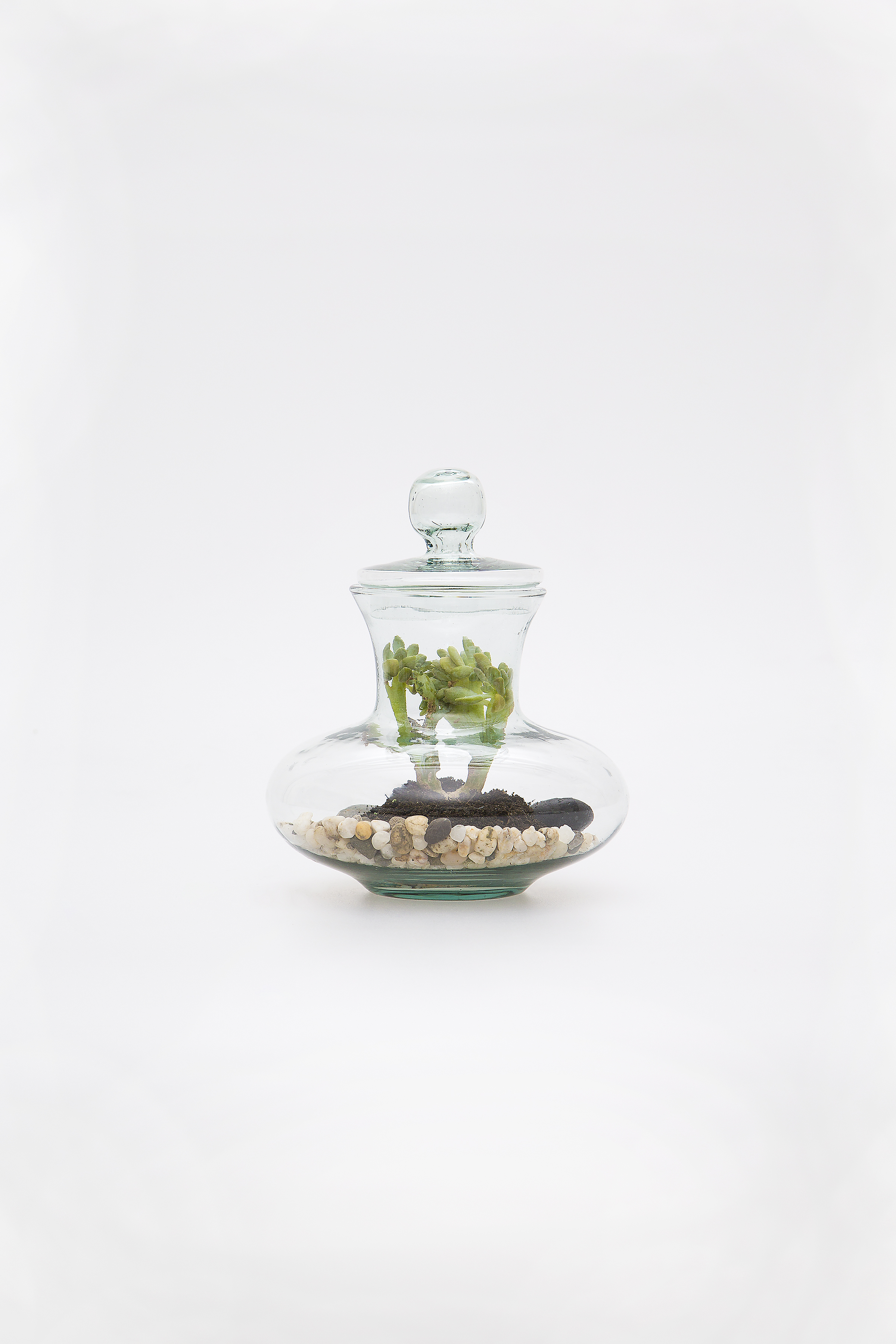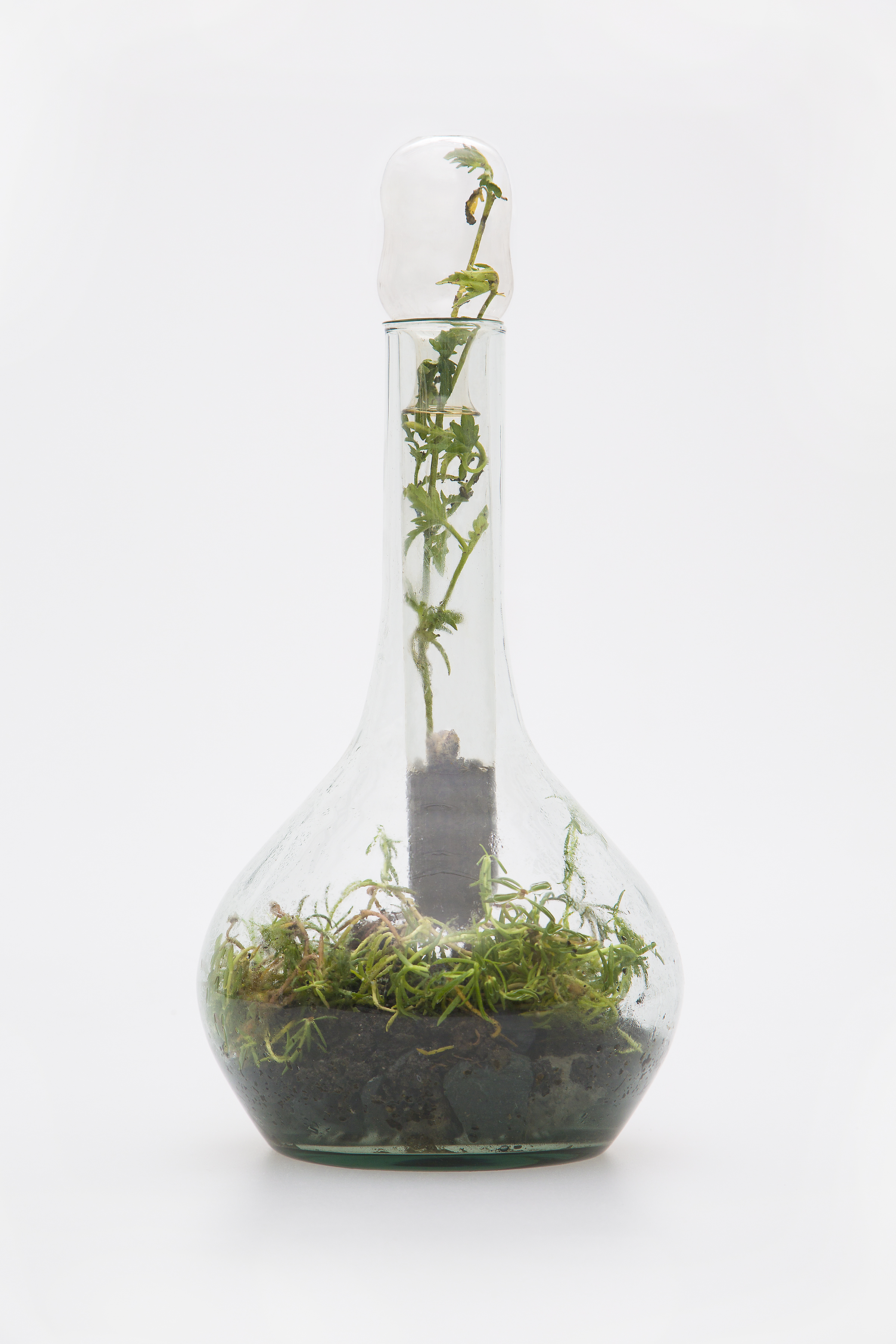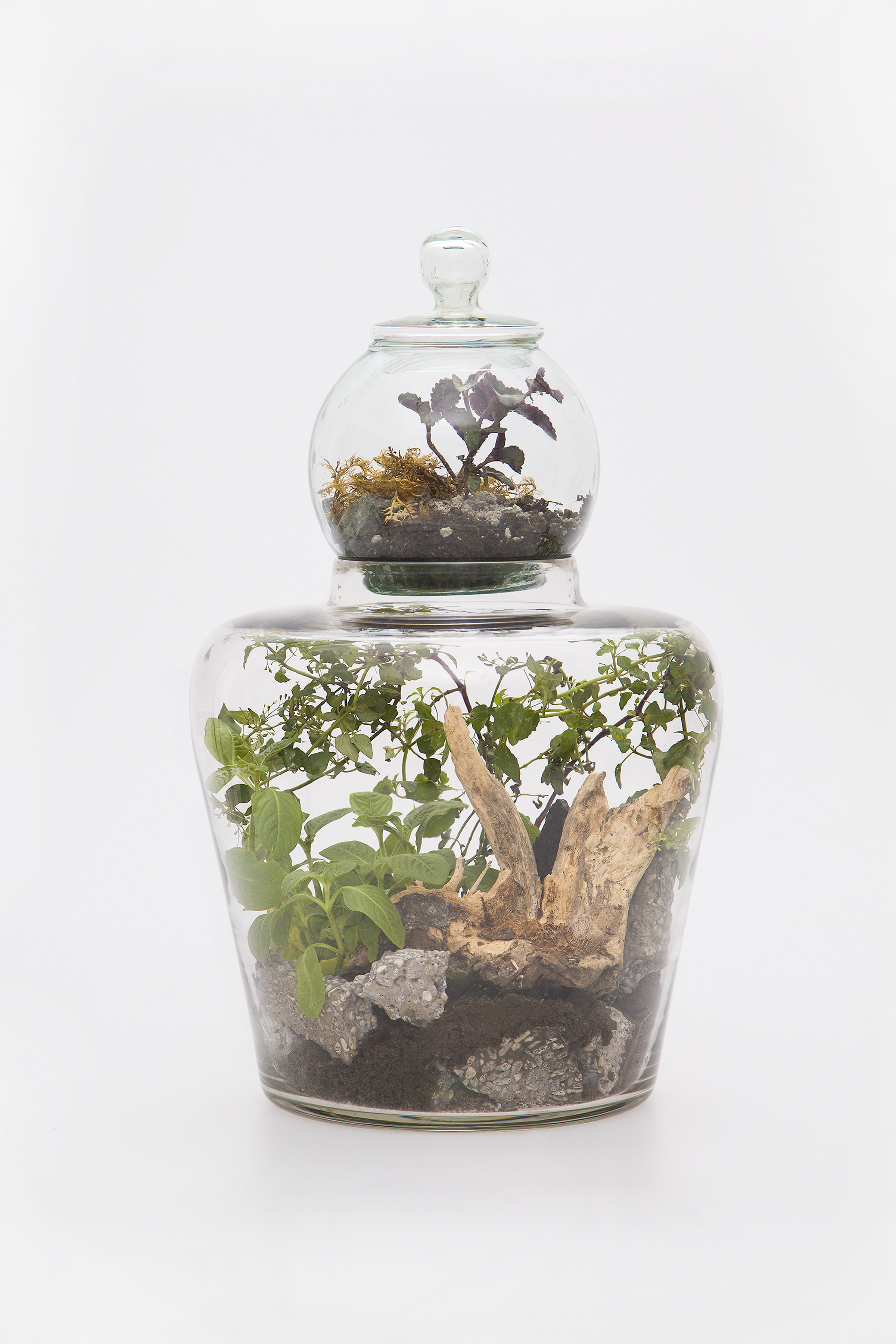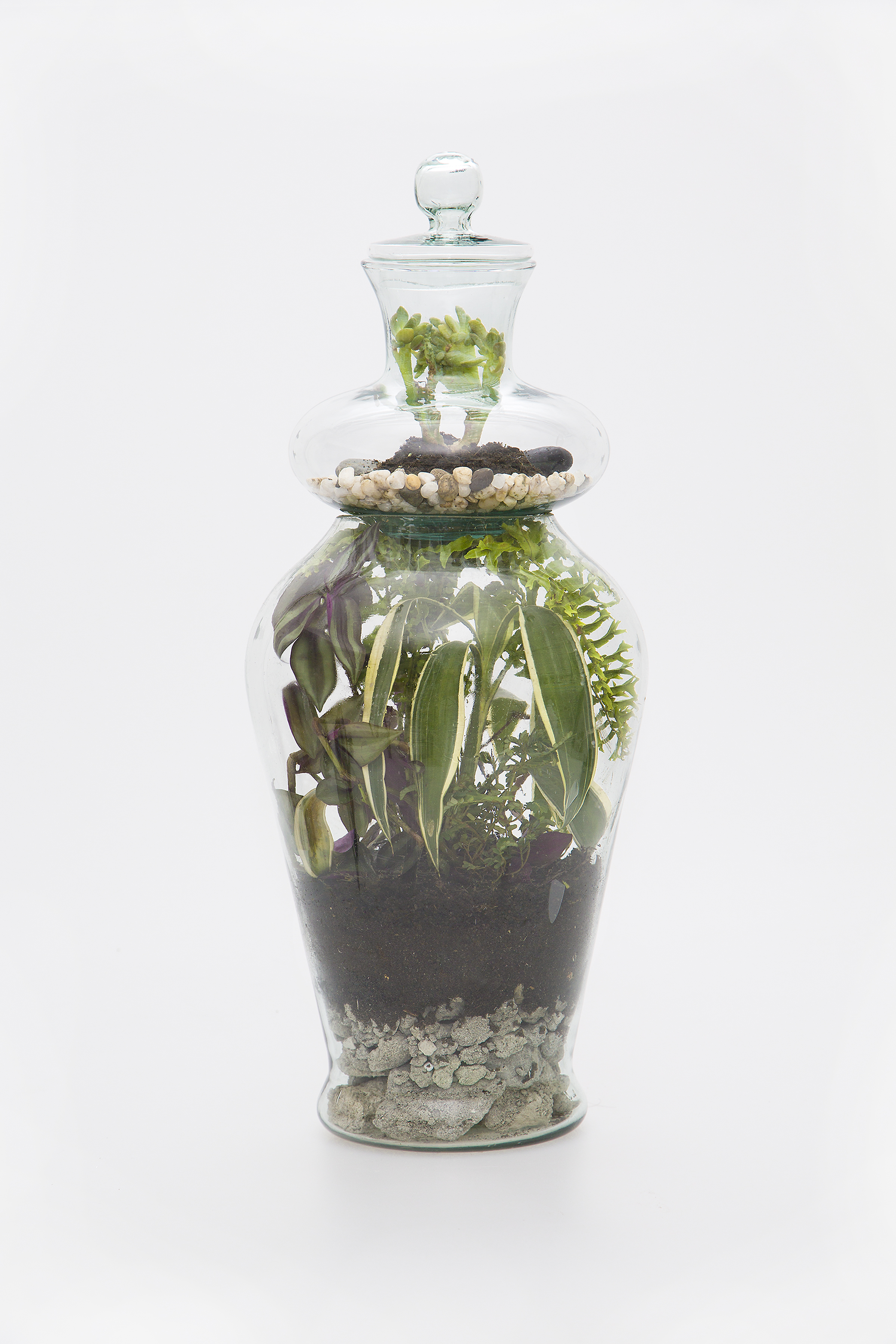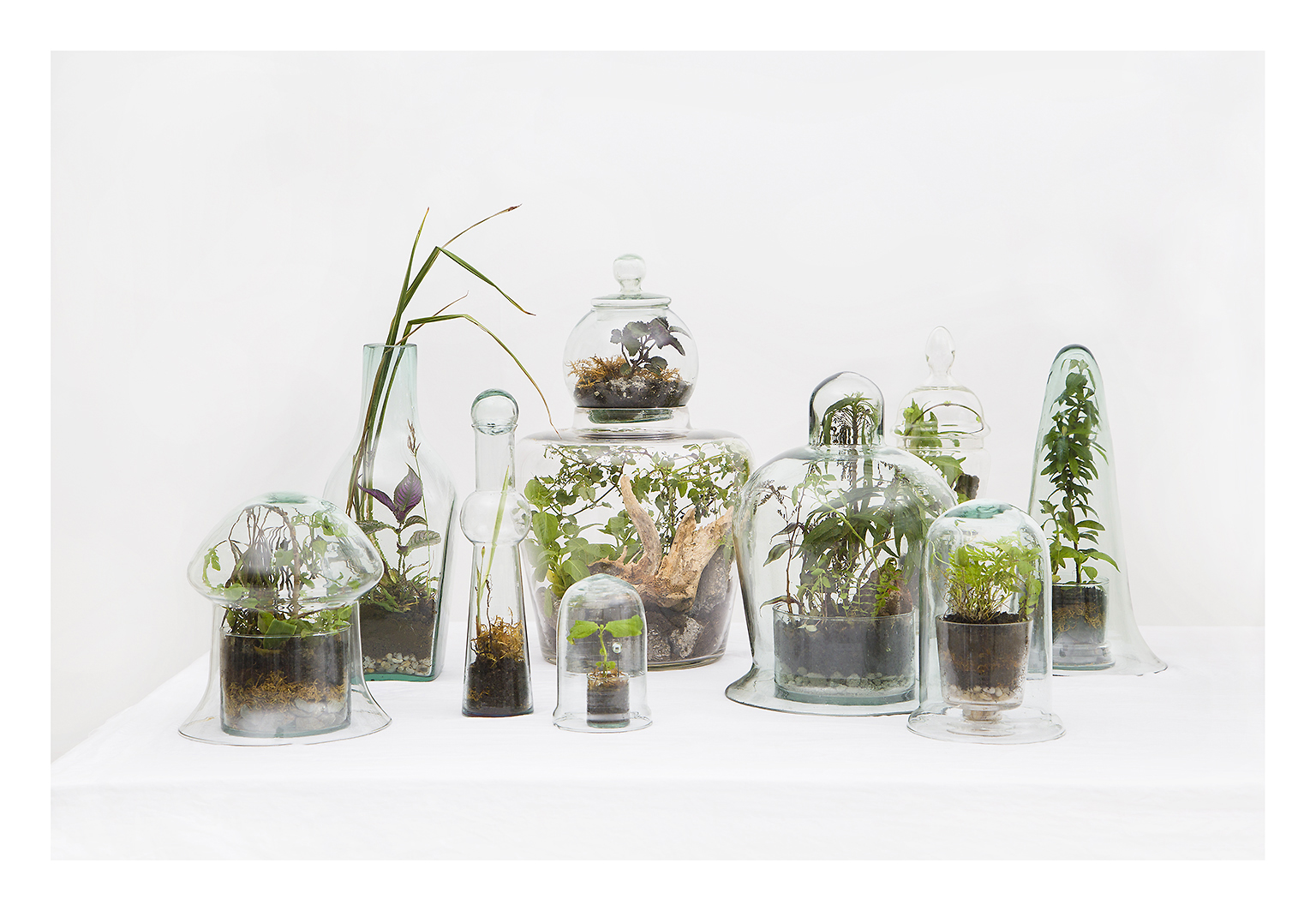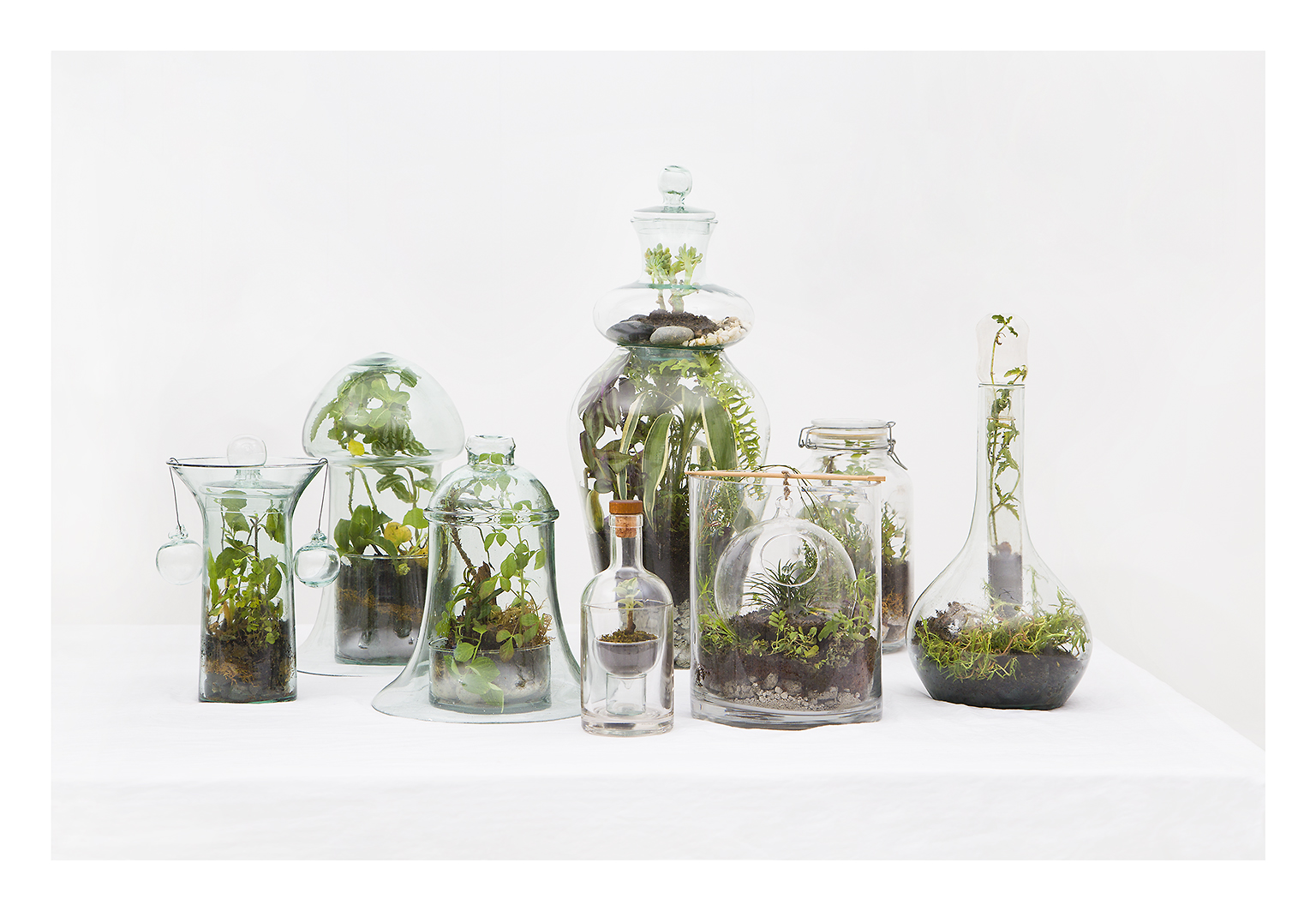
ULTRAMAR, Part II: Hunt & Gather, Terraria
Wawi Navarroza
Silverlens, Manila
About
ULTRAMAR, Part II: Hunt & Gather, Terraria
A Photo Exhibition & Book Project by Wawi Navarroza
Project Terraria is Wawi Navarroza's public call for the urbanfolk of Metro Manila to forage for soil, plants, wild growth, moss, pebbles, and ephemera from unlikely places and meaningful locations in the city. The materials from various sources are then juxtaposed and arranged in terrariums by the artist, and photographed for exhibition "ULTRAMAR, Part II: HUNT & GATHER, TERRARIA".
Ultimately, the communal project builds a psychogeographic map of the corners of Metropolitan Manila, the city and its memories, and its pressing realities written in a created habitat of plantlife and native soil. The exhibition is accompanied by an artist's book/catalog containing Field Notes and annotations from the collected contributions.
The Exhibition
ULTRAMAR, Part II: Hunt & Gather, Terraria is Wawi Navarroza’s return to the studio.
Prior to her ULTRAMAR project, gestures of intervention had directed her practice towards great terrains and landscape as she situated herself within its very dominion. For Hunt & Gather, Terraria, the artist reverses the scale and collects bits from exterior landscape—foraging samples around the city in places that have allowed the land in which they rest upon to shift according to their immanent anecdotes—and takes it back to the studio for assembly and processing. The exhibition presents photographs of artificially constructed habitats encased in glass containers, a Liliputian landscape where each is a bricolage that makes up a studied world.
What makes up this catalog of samples is what Navarroza describes as “fabricated environments, evidences of landing, of rooting, a model after nature, built from both memory and amnesia, detritus and dust, black coal, grey ash, white smoke and other relevant materials particular to our complex urban- barrio situation here, locally sourced from places and people in Metro Manila..., endemic plants and wild growth, concrete junk and memori-al soil (those from memory or recent history) all displaced from their original location. There is earth from the Payatas landfill, rubbles from real estate construction sites, pebbles from a golf course, some ash from Manila North Cemetery, weeds extracted from the Department of Environment Services, etc....”
With this, the laboratory of Wawi Navarroza’s studio practice encounters the artist building from an aggregated collection indexing her immediate loci, a map in layers. In the end, we witness a typology of this harvest — a Mundus Novus culled from the fragmented.
In November 2012, Navarroza’s ULTRAMAR, Part I: Falling Into Place, Gathered Throng focused on the sea and fluidity at the same time it allowed impressions of re- grounding after being set adrift. This time, ULTRAMAR, Part II: Hunt & Gather, Terraria navigates back to shore and muster the earth as we walk it.
- TeXla
The Book
The end of the exhibition will mark the beginning of its printed incarnation: a two-part book, comprised of field notes, a bespoke botanical archive of images, critical essays by international contributors and the complete catalogue of exhibited photos. The book is supplemented by an infographic poster-map, designed by Kristian Henson (Yale School of Design), that comprehends all the foraging locations for terraria samples. Navarroza's photographs document the collision of memories specific to these locations, and this book chronicles her methodology. It testifies the work in progress. As a publication, HUNT & GATHER, TERRARIA reaches its fruition. More than just a collection of images, it emerges as an academic effort in the fields of psychogeography, urbanism, permaculture and historical memory.
Designed by Stefan Kruse Jørgensen (DK)
Edited by Lobregat Balaguer (ES)
In collaboration with The Office of Culture and Design (PH)
"Gather all the plants and precious things (...) to fill the Garden."
- Juan de Cuéllar
The project that Wawi Navarroza lays before us brings the artist back to the beginning of human labor. Gathering a harvest is one of the earliest organized tasks that came about when man decided to establish fixed, stable settlements and depart from a nomadic existence in search of sustenance. It would seem in this project that Navarroza had collected pieces of reality as if they were the artist’s nourishment. This activity also suggests a return to the field, confronting the very reality in which we operate as we search for new truths.
Art modifies reality in a manner that allows us to observe it in distinct ways. This modification does not have to be something massive and powerful. Rather, it could be a gesture that catalyzes change, coming out of an intent that is creative and clear. The simple act of moving an object from one place to another can be considered an artistic act that alters its situational context and, conversely, its meaning. Duchamp put this argument to the fore by transferring a bottle rack and urinal to the context of an exhibition space. More recently, and along the same lines, the artist Lara Almárcegui inaugurated a project at the Spanish Pavilion of the 55th Venice Biennale wherein she presented mountains of earth and debris that, within the "white cube" of the exhibition space, invited the spectator to reconsider his reality.
The transfer of material (the act of transporting) is also meaningful in itself as contextualized by Navarroza in her serial project, Ultramar. From the vantage of having accompanied the artist in the first leg of her adventure, I immediately recognize in this second chapter the implicit necessity of travel. As Louis-Ferdinand Céline himself stated at the beginning of his great novel Journey to the End of the Night, travel is an activity that never ends as it can be continued in the imagination. In this case, what the artist embarks upon is a discovery of an imagined place where plants are moved from one spot to another and where landscape can change its scale.
Ultramar refers to the continuous state of transfer that the artist feels in consonance with migration. To be at one place and another at the same time. Orientation, disorientation, reorientation. Strangeness, nostalgia, the surprise of discovery. In Madrid, Navarroza was fascinated by the incongruous presence of palm trees: plants "from another place" that she hunted, documented, recreated, to the point of taking them along on an initiate's journey, almost mystically, to the waters of the Mediterranean. Now she brings that fascination to a supposedly more familiar context (Manila). Once again, there she searches for what is strange within the ordinary, those things that "should not be there" but nevertheless exist and, simply because of this, deserve to be recognized.
La Vigie, by the French artist Jean Luc Moulène, photographically documented the growth of a plant in the security perimeters surrounding public buildings in Paris. A plant may in itself represent a silent manifesto of its existence. In this case, these ‘renegade’ plants grew in zones where no one is allowed to trespass. Moulène's work was that of a botanist, but also that of an archivist, a documentarian, a critic and, lastly, that of an artist. All of the personas of the artist coalesce in a single entity when exhibited, but each of these is susceptible to analysis and mention upon closer inspection. Concretely, I would like to focus for a moment on the roles of archivist and botanist that Wawi Navarroza assumes in this project. There is a certain kind of artist that requires a systematized approach to work in order to apprehend and confront it, an approach that I compare to the scientific method.
Modern botany owes much of its existence to geology, which developed at the end of the 18th century and quickly became a vogue pastime for the well-to-do, who took it seriously and curiously upon themselves to gather and study rocks and stones from their environs. Among the illustrious of this field is the Prussian naturalist Alexander von Humboldt. Aside from visiting almost all of Europe, Humboldt landed on many shores in Asia and Africa, though he is most remembered for his prolific voyage to the Americas (in particular to Mexico and what is today known as the state of Guerrero). His arrival to port in Acapulco coincided with the galleon of Manila taking to sea. The galleon, weighing about 1,200 to 1,500 tons, sailed for Manila in the middle of July or the beginning of August, taking advantage of southeasterly monsoon winds. The duration of the voyage was established at about three or four months, once the art of navigation had been perfected. After news of the galleon's safe entry to port reached Mexico, the Chilpancingo and Acapulco routes were saturated with traders.
Beyond the synchronicity between his travels and the establishment of the Mexico-Philippines trade routes, Humboldt interests us for his insatiable activity as an explorer. He documented a dense number of then uncatalogued species in the Americas. Perhaps it was an excess of ego that led him to be more preoccupied with the quantity of species discovered rather than with depth of his research. Navarroza finds herself, arguably, on the opposite end of Humboldt's spectrum. Her interest in each discovered specimen is artistic, and therefore aesthetic, as well as social and economic. Since the samples are foraged from common places, places where few people would think to conduct an investigation of these characteristics, Wawi's approach is to tackle big issues from the scale of what is small, hoping to glean, from an ultimate attention to minor detail, information that allows one to draw larger-scale conclusions.
Returning to the topic of botanical expeditions, these are inconceivable without recalling the history of European colonization. Compelled by the urge to document, analyze and, to a great extent, exploit the natural resources of the places they colonized, Western explorers "discovered" species that were already common knowledge to indigenous dwellers. This is a subject that holds interest for the artist in her search for roots, the original and altered ones of her culture, her home and its land. Wawi recognizes the existence of an autochthonous (local) environment—already deeply known by the people who live in these surroundings—but, lacking apparent value, no one has bothered to record. Navarroza's work is a poetic act of giving importance. It is a proclamation teeming with eloquence and beauty made all the more valuable for its careful, exquisite presentation.
Here, again, we arrive at the phrase that, decontextualized, was employed as header for this text. It is a quote, arbitrarily abbreviated at the head, from the Spanish botanist, Juan de Cuéllar, who set sail for the Philippines in 1786 under the appointments of royal botanist and naturalist at the service of the Real Compañía de Filipinas. This heading is an attempt to extract the elegance contained within the words of Juan de Cuéllar, though perhaps their original meaning was quite different. The full citation is a product of the colonizing and commercial objectives that he was assigned, and that I now reproduce in their extended version:
“Gather all the plants and precious bodies (...) to fill the Garden and Office of Natural History. Study their useful products for commerce and industry.”
The mere necessity to prove something already denotes its situation as fragile or endangered. The post-colonial tendency in art struggles against the duality of invoking, claiming, or defending oneself, and in the act of doing so, revealing one’s apparent weakness. In reality, every artistic form emerges from a vulnerable state and is strengthened by the artistic exercise itself. The world of ideas is contradictory and fragile; when it enters the terrain of politics and identity, rarely does it generate indestructible results beyond its own presence manifested through art. Thus, the work of art must claim its own space, without seeking to be justified by the ideas that formed it or the ideas that arise from it. The work only needs to be and not pretend or appear to be.
The work of art must also be active. It must generate or propagate movement. In the project at hand, this characteristic is always present. The expeditions of Navarroza, and her collaborators, in search of objects to study, have proven it so. They connect to a tradition in contemporary art that walks the city, that discovers it on foot. Francesco Careri, in his book Walkscapes, identifies the act of walking as the first artistic action of man, that of reconstructing the landscape with his every step:
“...in changing the meanings of the space traversed, walking became the first aesthetic action which penetrated the territories of chaos, constructing a new order which developed the architecture of the objects built upon it."
Wawi seems to be gravitated by a Situationist sort of drifting that leads her to falsely "insignificant" places, finding herself in tangent with Dadaism in its celebration and exploration of apparently banal locations. Here, we encounter another essential aspect of this project that, strangely enough, contradicts itself with what was said at the beginning of this text. If gathering a harvest and accumulating materials is the result of a sedentary turn in lifestyle, the process of searching for and locating those materials are basically a nomadic one (as Guy Debord might have claimed, though perhaps in reference to a kind of transit with no apparent objective).!
What differentiates displacement from a search is the intention of the practitioner. There is a difference between walking and taking a walk. Wawi prefers to observe (which is different from just taking a look), to capture what was pre-visualized, as if the plants she gathers were already part of a landscape that existed in her head. A Platonic model of the "ideal garden," formed by elements with which she shares an organic texture. A decentralized ecosystem, autonomous, with borders blurred. Non-places that demand to be named.
This capacity to pre-visualize a landscape imagined from reality finds its roots in another branch of contemporary art practice, Land Art. From Tony Smith to Richard Long by way of Robert Smithson, all of them tackled ideas that were based on the reality of the landscape. Navarroza works similarly, though backwards, extracting from reality the elements she needs to build an invented landscape. A meta-landscape that could actually be conceived as supra-landscape since its essence is synthesized.
As such, the artist creates a small parallel universe. This possibility reminds me of another artist, Olafur Eliasson, and his very special piece that I discovered in Switzerland, at Art Basel, in the Art Unlimited section, dedicated to monumental works by contemporary artists. While unceremoniously perched on a small branch, Eliasson planted an orchid that was fed with a small spotlight and a humidifier that reproduced the ideal conditions of its habitat.
Smithson recalled the places through which we pass in transit and never stop to consider. He regarded them as silent monuments (Monuments of Passaic). For his project Fake Estates, Gordon Matta-Clark purchased small, abandoned plots of land located in between buildings, and then preserved them through documentation. Navarroza, in turn, recovers a set of botanical species that act as identifiers for places she has selected. With them she generates a compound reality that contains theirs—their past, their memory—and the reality that the artist provides—a new present, a future.
The artist generates a personal reality from her immediate environment, based on observation, documentation and the inventory of what surrounds her. For Navarroza, this process takes into account the plants that she collects, as well as the places where they were found and the people who helped find them. Once again, Lara Almárcegui: for the 27th São Paulo Biennial, the Spanish artist dedicated herself in surveying empty real estate lots of São Paulo, documenting and quantifying their surface space and materials, to form a catalog of the city's empty spaces. In Mexico City, the artist Goethe David Pontón also acted as reconnaissance archivist of the endemic species growing in the city's empty lots. In turn, from the physical and written documentation she has gathered, Navarroza is capable of creating new, natural spaces that are remarkable for its contained elegance.
This tendency to build from nature is reminiscent of Germanic currents in art from the 19th and early 20th century. From the writer, painter and scientist Goethe—whose extensive collection of plants with detailed descriptions at the height of Romanticism inspired much of his compositions—to Paul Klee, who abstracted shapes that occurred in nature for his paintings (Botanical Theater), it is clear that, so to speak, the artists have drunk from the fountains of nature to create their own works of art.
Art has ever been so close to nature that it has exerted a fascination in man since the very origin of our species. Around her aesthetic and even mystical properties, man has been inspired to produce a constant and prodigious number of creative forms. Man speaks of nature as much as she speaks of him, sharing a symbiotic history engaged in continual discourse. From her great displays of power to the more modest organic existences, nature is all and in everything.
Wawi Navarroza, headed towards the shores of Ultramar, in her second expedition, moves away from grandiloquent manifestations. She gazes upon the smallest, the things that normally escape our notice. She offers a microcosm of meanings reduced to miniature landscapes. Precious things to fill her Garden.
Nicolás Combarro
Madrid, 2013
Translated from the Spanish by Lobregat Balaguer & Irwin Cruz
Wawi Navarroza (b. 1979, Manila, Philippines) is a photographer/multi-disciplinary artist from Manila, Philippines. She graduated with a Bachelor of arts degree from De La Salle University, Manila and attended continuing education at the international Center of Photography, New York. recently, Navarroza completed her scholarship at the istituto Europeo di Design, Madrid under the program European Master of Fine art Photography.
Her work with contemporary photography has taken shape in highly-stylized symbolic mise-en-scène and tableau vivants to her more recent interest in landscape, constructed still life, and installation. Her landscape photographs propose a familiar ‘other place’ that opens up to fabricated emotional space that seem to be carved out by both personal and collective memory and amnesia.
Navarroza has widely exhibited in the Philippines and internationally. She has participated at the 2012 Tokyo Month of Photography presented by Tokyo Metropolitan Museum of Photography, the Asian Art Biennale in Taichung, Taiwan (2011), the annual touring exhibition “CUT: New Photography from South East Asia” by VWFA Kuala Lumpur, ASEAN-Korea “Emerging Wave” Asian Contemporary Photography Exhibition in Seoul, Korea (2010) and “Verso Manila: contemporary art from the Philippines” in Turin, Italy (2009). She has also been shown at angkor Photography Festival Cambodia, Noorderlicht Photography Festival Holland, and Photoireland.
Recent solo exhibits include: “ULTRAMAR, Pt.1: Gathered Throng, Falling into Place” (2012), “Dominion” (2011), at Silverlens Gallery, Manila and “On Landscapes and Some Dislocations” at Galería Patrick Domken, Cadaqués, Spain.
She has received a number of awards such as the Cultural Center of the Philippines’ Thirteen artists awards Triennial (2012), Lumi Photographic Art Awards, Helsinki (2011), and was finalist for the prestigious Sovereign Asian Art Prize (2011) and Singapore Museum Signature Art Prize (2011). Other awards include: International Photography awards (2010), Portfolio Preis (2010, Germany), Prix de la Photographie Paris (2009) and two award-winning solo exhibitions: “POLYSACCHARIDE: The Dollhouse Drama” (2005) and “SATURNINE: A Collection of Portraits, Creatures, Glass, and Shadow” (2007) which was cited Winner at the Ateneo Art Awards 2007, Philippines. in 2009, Navarroza was awarded the first asian Cultural Council-Silverlens Fellowship Grant to further her research and practice in New York City.
Her work has been shown in institutions such as the National Museum of the Philippines, Metropolitan Museum of Manila, Mongolian National Modern art Gallery, Hangaram Museum, Korea, National Museum of Fine arts, Taichung, Taiwan, and Fries Museum of Contemporary Art, Netherlands.
Navarroza has also worked as a lecturer of photography at De La Salle University and as an independent curator. She also sings for a post-punk rock band called The Late Isabel.
In the past few years she has based herself in Madrid, Barcelona and Cadaqués, Spain. Currently, Navarroza is working and living in Manila, Philippines
Works
